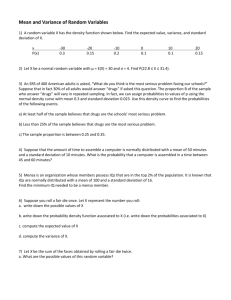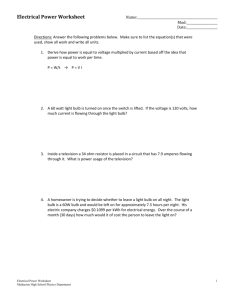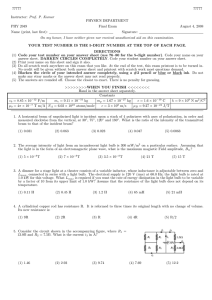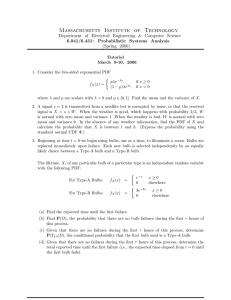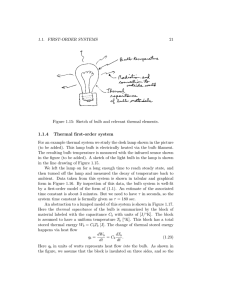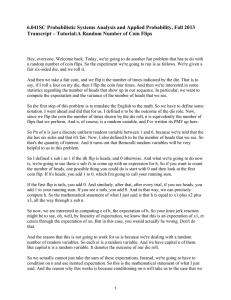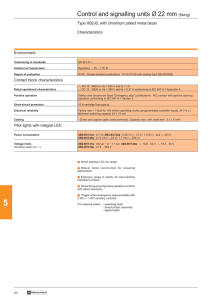Fundamental Tools Sheet 6: Random variables and probability distributions
advertisement
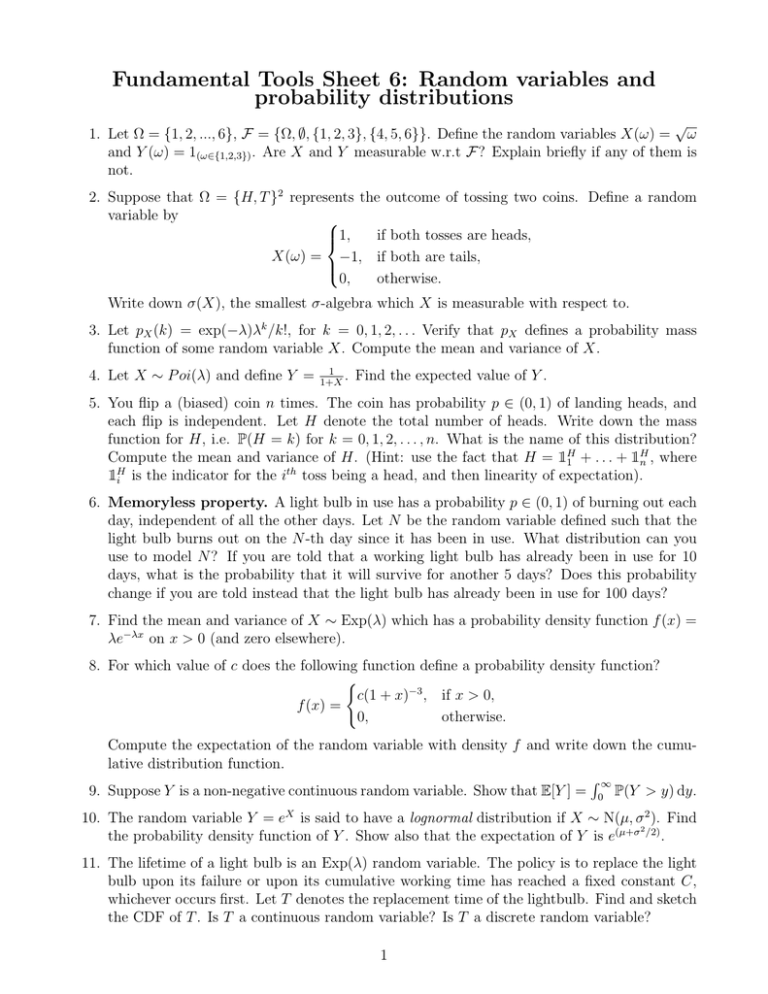
Fundamental Tools Sheet 6: Random variables and
probability distributions
√
1. Let Ω = {1, 2, ..., 6}, F = {Ω, ∅, {1, 2, 3}, {4, 5, 6}}. Define the random variables X(ω) = ω
and Y (ω) = 1(ω∈{1,2,3}) . Are X and Y measurable w.r.t F? Explain briefly if any of them is
not.
2. Suppose that Ω = {H, T }2 represents the outcome of tossing two coins. Define a random
variable by
if both tosses are heads,
1,
X(ω) = −1, if both are tails,
0,
otherwise.
Write down σ(X), the smallest σ-algebra which X is measurable with respect to.
3. Let pX (k) = exp(−λ)λk /k!, for k = 0, 1, 2, . . . Verify that pX defines a probability mass
function of some random variable X. Compute the mean and variance of X.
4. Let X ∼ P oi(λ) and define Y =
1
.
1+X
Find the expected value of Y .
5. You flip a (biased) coin n times. The coin has probability p ∈ (0, 1) of landing heads, and
each flip is independent. Let H denote the total number of heads. Write down the mass
function for H, i.e. P(H = k) for k = 0, 1, 2, . . . , n. What is the name of this distribution?
H
Compute the mean and variance of H. (Hint: use the fact that H = 1H
1 + . . . + 1n , where
1Hi is the indicator for the ith toss being a head, and then linearity of expectation).
6. Memoryless property. A light bulb in use has a probability p ∈ (0, 1) of burning out each
day, independent of all the other days. Let N be the random variable defined such that the
light bulb burns out on the N -th day since it has been in use. What distribution can you
use to model N ? If you are told that a working light bulb has already been in use for 10
days, what is the probability that it will survive for another 5 days? Does this probability
change if you are told instead that the light bulb has already been in use for 100 days?
7. Find the mean and variance of X ∼ Exp(λ) which has a probability density function f (x) =
λe−λx on x > 0 (and zero elsewhere).
8. For which value of c does the following function define a probability density function?
(
c(1 + x)−3 , if x > 0,
f (x) =
0,
otherwise.
Compute the expectation of the random variable with density f and write down the cumulative distribution function.
R∞
9. Suppose Y is a non-negative continuous random variable. Show that E[Y ] = 0 P(Y > y) dy.
10. The random variable Y = eX is said to have a lognormal distribution if X ∼ N(µ, σ 2 ). Find
2
the probability density function of Y . Show also that the expectation of Y is e(µ+σ /2) .
11. The lifetime of a light bulb is an Exp(λ) random variable. The policy is to replace the light
bulb upon its failure or upon its cumulative working time has reached a fixed constant C,
whichever occurs first. Let T denotes the replacement time of the lightbulb. Find and sketch
the CDF of T . Is T a continuous random variable? Is T a discrete random variable?
1


